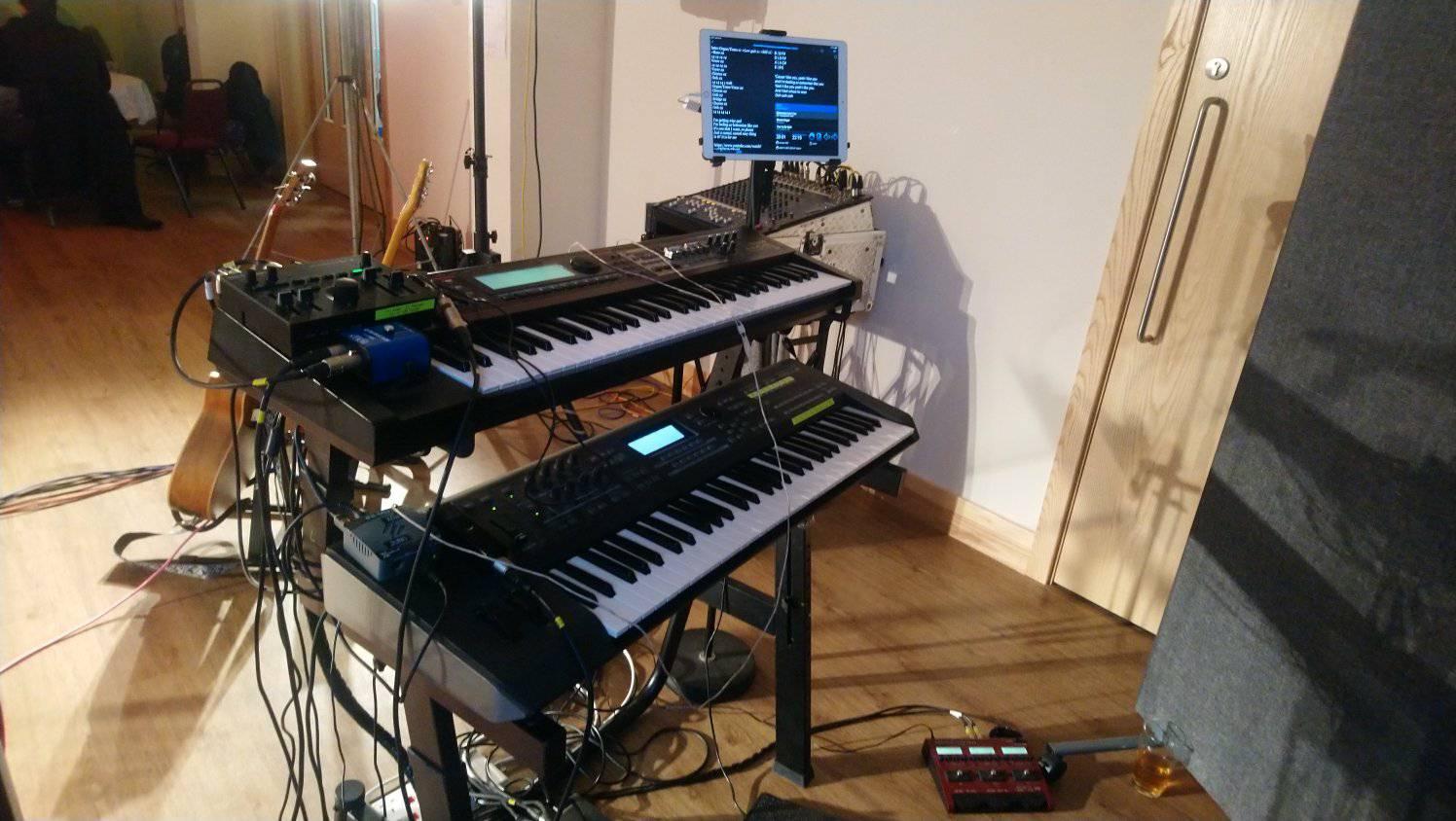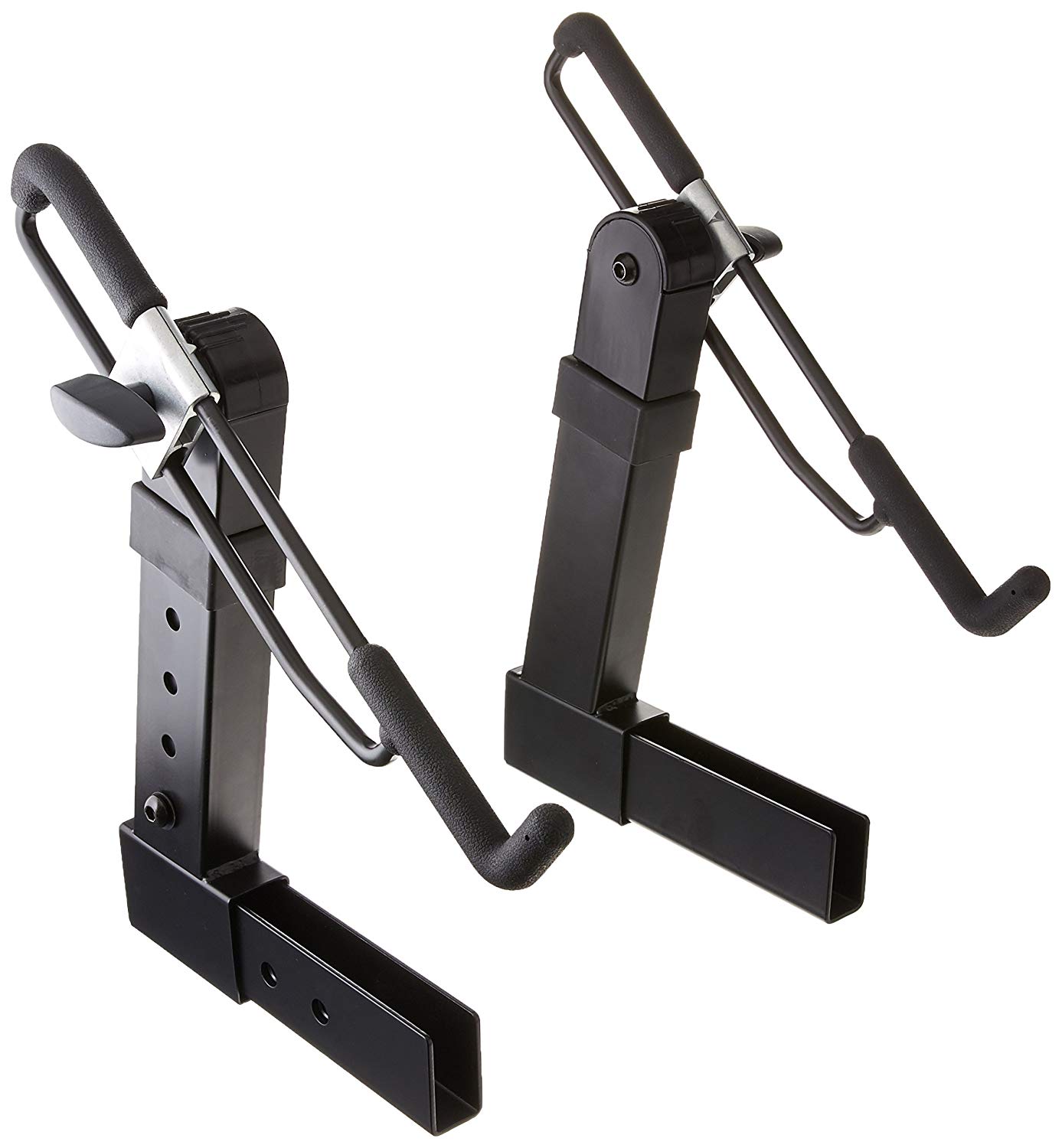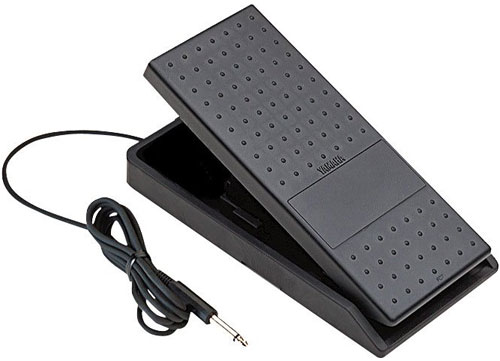So many plans for this particular blog… Like a lot of things, initial ideas seem great but the following through can be tricky.
Anyway… I play in a small amateur covers band, Strange Formation. Mostly I play keyboards, sometimes I play bass, sometimes I sing backing vocals. Over time and various renditions of the band the equipment has changed but really my rig has remained static for pretty much all of 2019, subject to some wiring updates. I thought it might be nice to document my rig as we come up to the end of 2019. I won’t go too much into “band” equipment like the mixer and PA speakers.
First of all… hardware… I use a Quik Lok M/91 “Monolith” stand and the M/2 second tier add-on as my keyboard support.
The legs of the Monolith stand “swing out” from flat in seconds. The second tier add-on slides into the keyboard support tubing and thumbscrews lock them in place. I have the second tier virtually “flat” at the highest level (unlike these promo pictures) for reasons that I will describe later. The sides of the main stand can be height adjusted and I have used a “china marker” to indicate my chosen playing height.
A new addition I tried out earlier this year is a simple “wing” bracket I designed using a 3D printer that can slide over the main keyboard support arms allowing me to add some small battery powered gooseneck LED lights to help me see some controls on the lower keyboard. The initial “prototype” has worked fairly well, but I have a few thoughts about how I can improve it.
I also have a straight microphone stand (heavy round base) used solely as a tablet stand, using an adjustable tablet holder from Konig & Meyer.
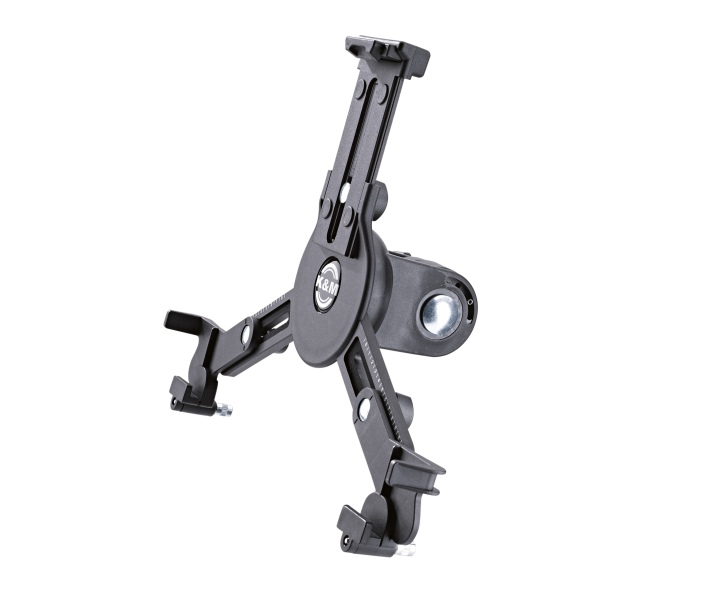
So… on to instruments I guess. The bottom layer of my keyboard stack is a Yamaha MOX6.

This is the real workhorse in the setup and almost every song the band plays has a dedicated performance I’ve configured, sometime a single preset voice, sometimes a mix of presets in layers or splits, sometimes even a mix of preset voices and custom voices. The performance I think I am most proud of is a mix of vintage electric piano, organ chords triggered by single keys, as well as car horns and pneumatic drill like effects used in a song Summer in the City at the end of the first chorus – the single key organ chords let me play a melodic part, chord part and triggering effects using just my hands and no sequencing.
The top layer of my keyboard stack is a Roland JUNO-Gi.

This was the first keyboard I bought for live band use, and was my “main” keyboard for a long time, but now mostly sits on one preset, providing a bass guitar sound through an amp simulator and a Wurlitzer style electric piano in a split keyboard configuration. Some songs have a variation like a synth bass instead of electric bass, or maybe a distorted guitar sound layered with the bass. Sitting quite nicely on/over the flap for a USB memory stick and the D-Beam controller is another piece of Roland gear.

The Roland VT-4 processes my vocal sound, usually just some chorus and reverb but sometimes rather more, for example, I use the Vocoder effect on an ELO track Don’t Bring Me Down, controlled using MIDI from the MOX6, and I’ve just started experimenting with the pitch shifting feature… This is why I have the second tier flat! Wedged between the VT-4 and the JUNO-Gi’s pitch stick is a Rolls MS111 mic switch.
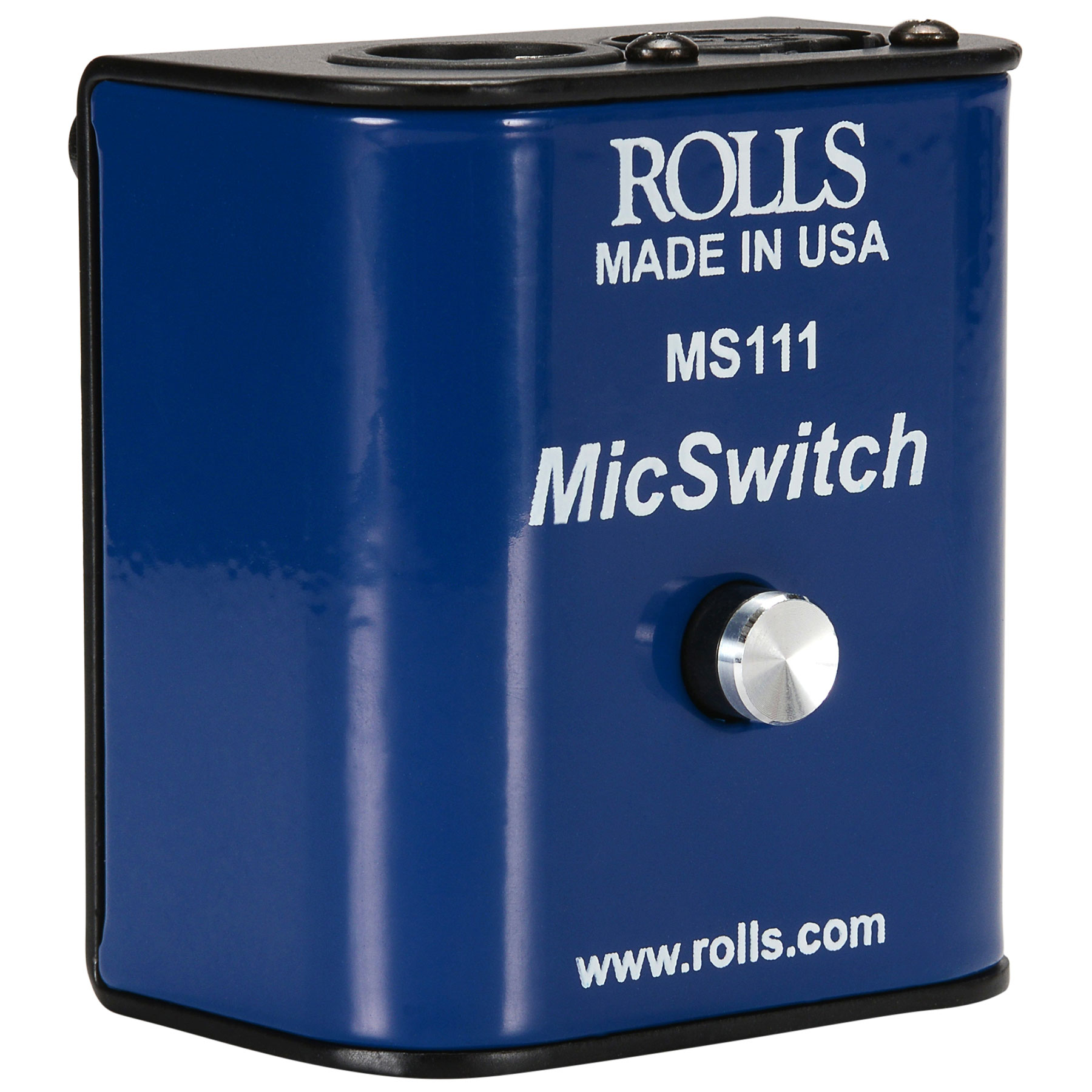
My microphone is hooked into this box, then feeds into the VT-4 via a short XLR cable. The XLR connections “nicely” go over the left side of the keyboard. This unit obscures some (more) controls on the JUNO-Gi that I don’t use but the position makes it easy to see if my microphone is live or not. So which microphone do I use?

Because I’m on my feet, moving around, and really don’t get on with fixed microphones while trying to play multiple parts at once I use a Shure WH20 headset with an XLR connection.
For my bassist alter-ego, my current instrument it a Steinberger Spirit XT-2.

I won’t picture the yellow guitar stand (nothing special, just yellow). I run this bass solely into a Zoom B3n multi-effects processor.
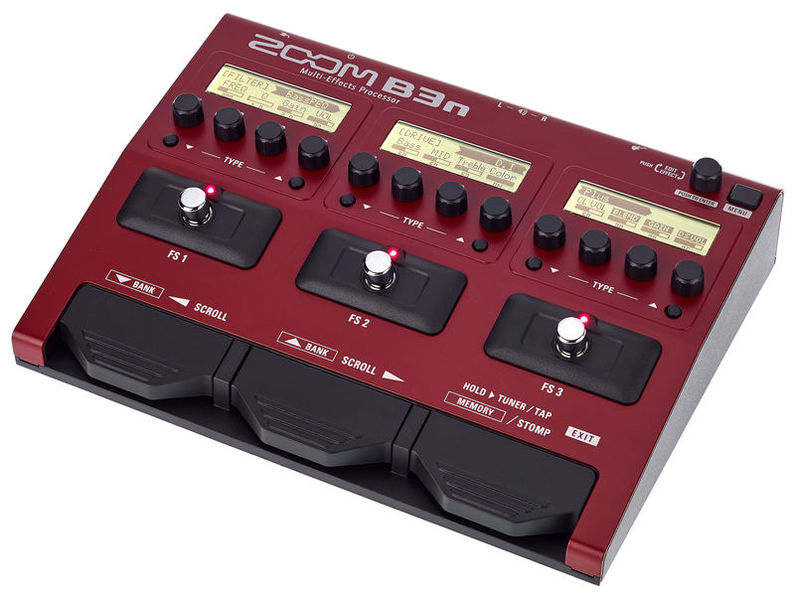
I have a basic patch I built up based on individual effect pedals I’ve used before, most recently before this I used a range of Mooer pedals. Mostly the B3n has a “boost” effect permanently on and a fuzz effect I mostly have on but turn off for certain songs or parts of songs.
I run stereo signals from the MOX6, JUNO-Gi, VT-4 and B3n into a small digital mixer that lives on the floor by the round front tube of the Monolith stand.
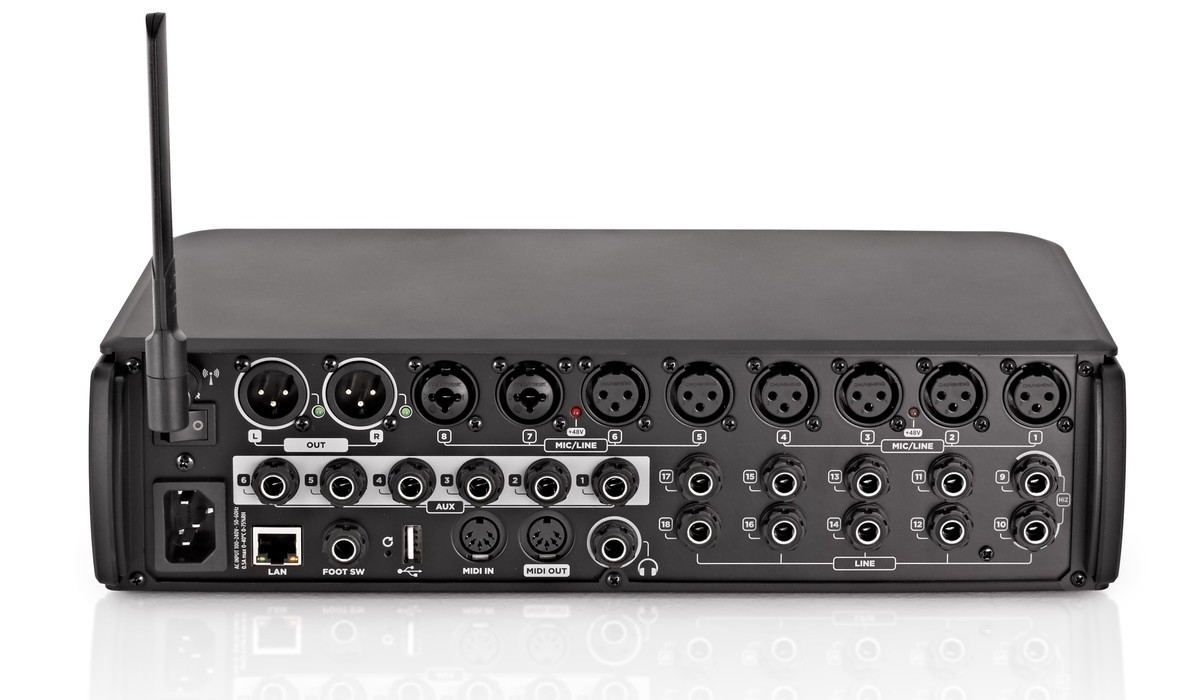
This is an RCF M18 to which I’ve actually added rubber “bumpers” on the sides of mine for protection. RCF are more known for their PA speakers but this is a nice little mixer and a small band could potentially run all their microphones and instruments into this. I use it as a sub-mixer and an in-ear monitor mixer.
This year I prepared a set of carefully measure cables, six of which I wrapped in a plastic cable tidy wrap and they go from the quarter-inch line inputs up the side of the Monolith stand branching off to the line outputs of the MOX6, JUNO-Gi and VT-4. The jacks are both colour coded per device (using colours that make sense to me at least) and have heat-shrink labels to identify where they go, e.g. “VT-4 L” or “MOX R” on the signal source end or channel numbers like “13” on the mixer end. Two more “wrapped” cables, again produced to a suitable length feed the B3n signal to this mixer.
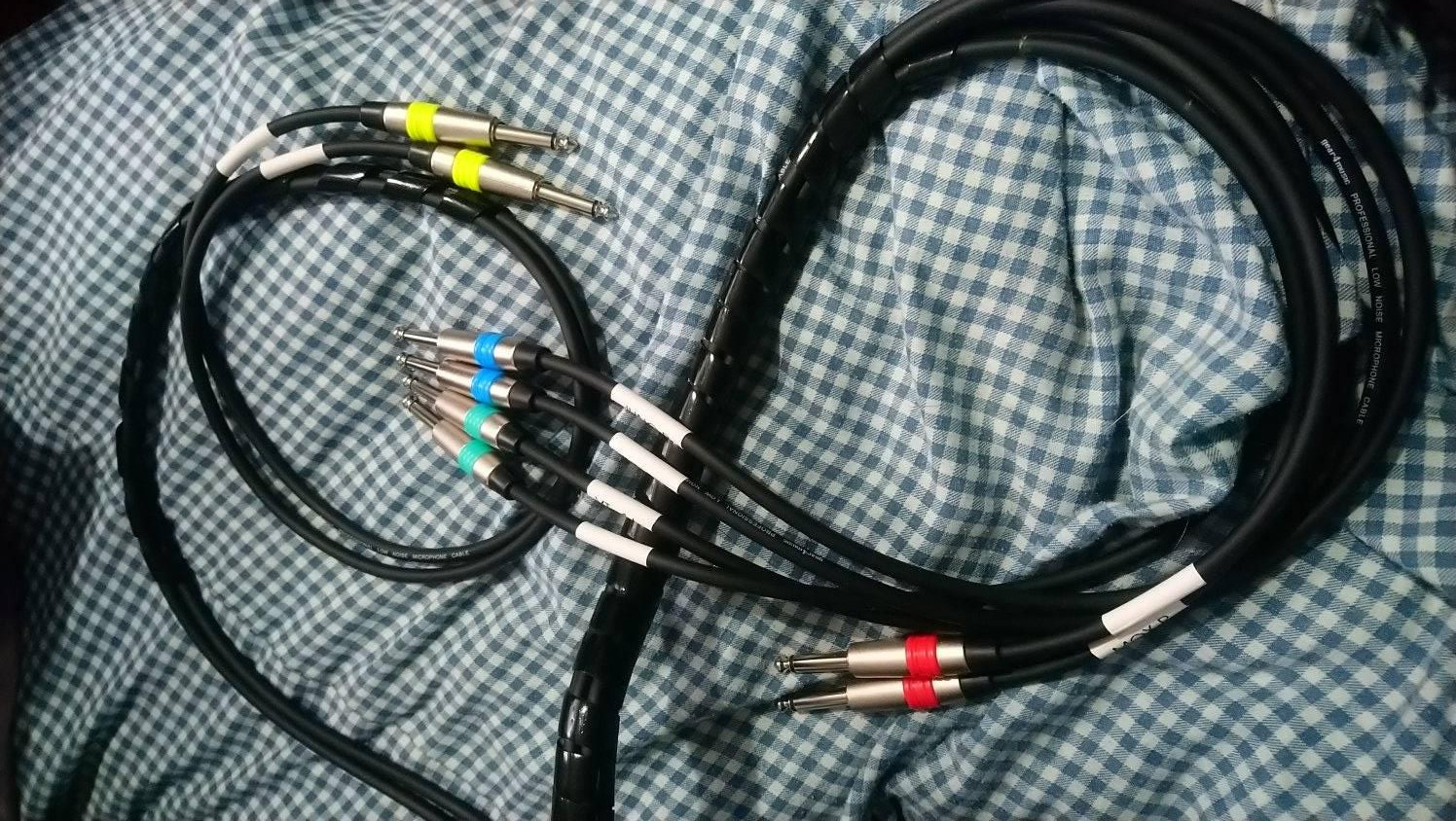
I take use four output signals from this mixer. Firstly the left and right main outputs (XLR) feed to balanced line inputs on the band mixer (not discussed here beyond the fact it is currently an old second hand MG166C with one dead stereo channel). This carries a mix of the keyboards and bass. I also use one of the AUX outputs to carry my processed vocals. This means I can be in total control of the balance of my instruments but still provide an independent vocal signal for mixing. I use a small “DI” box for the AUX output so as to use a balanced connection to a microphone input on the band mixer.

As well as feeding the band mixer, I use the headphone output of the M18 for an in-ear monitor mix. The first step of which is another custom cable (I’ve been busy this year) which started life as a short XLR “patch” cable and had the female connector removed and a TRS jack soldered in its place. A nice heat-shrink label identifying the usage finished off the job. This allows a length of XLR cable (fairly short pre-built cable) to feed a small belt-clip headphone amplifier.
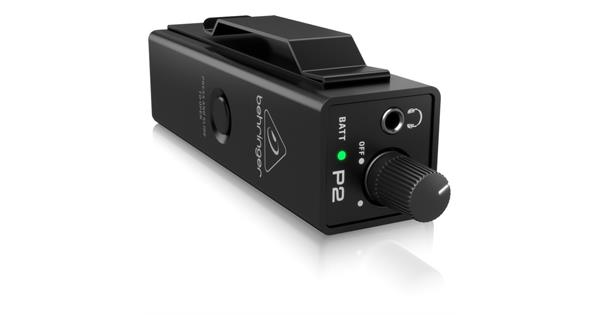
Powered by two AAA batteries this Behringer personal headphone amp can take a stereo signal over XLR (which locks into place, nice!) and amplify it for headphone or earphone usage. In my case some Shure sound isolating earphones, SE315 if I recall correctly.
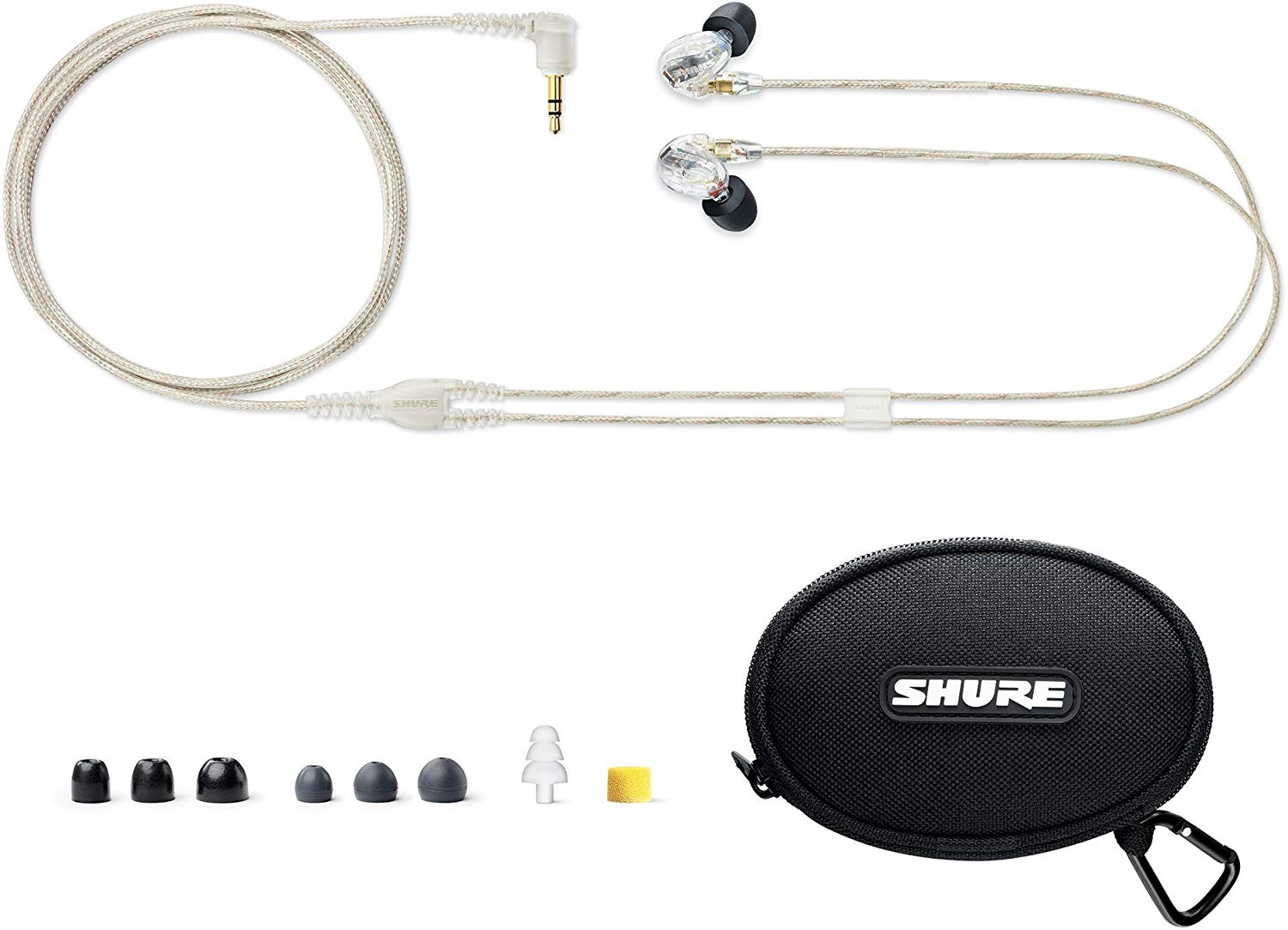
Because when I wearing these my IEM mix drowns out nearly everything else I take extra care to keep the volume on my P2 headphone amp low.
Finally, or almost finally, some unsung heroes of the rig, the various pedals a foot-switches I use.
From left to right as I arrange them, first I have a Boss FS-5L latching switch. I hook this into the MOX6 assignable input and use it as a slow/fast rotary speaker effect switch on organ sounds. Next I have a Roland DP-10 damper pedal for the JUNO-Gi. I don’t use it often. I do however heavily use another DP-10 for the MOX6. Finally a Yamaha FC7 is used as a volume controller for MOX6 sounds. Sometimes only part of the keyboard is assigned to respond to this pedal.
For ease of setting up (and to aid visibility in dark conditions) all these pedals have black on yellow labels, describing to which keyboards and to which control jacks they should be connected.
So… one more thing… maybe two…

I use an iPad Pro (2nd gen, 12.9″) running software call BandHelper to keep all the songs for any given set in order. Most songs have a PDF (created using some software I created myself) to remind me of the chords, though I barely actually read them nowadays, along with a notes panel which might have a few backing vocal lyrics, or comments to remind me of various things, and also gives access to MIDI program changes. These set up the keyboards for each song and are sent out using an E-MU Xmidi 2×2 interface, hooked to the iPad using a Lightning to USB “Camera Connection Kit” adapter.
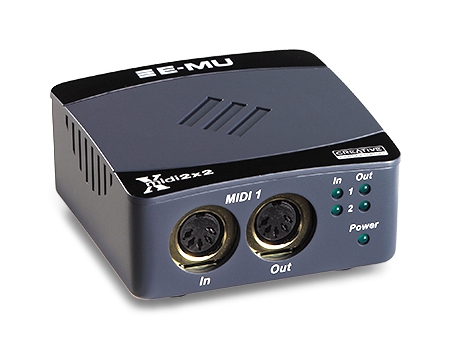
One output of this MIDI interface feeds program changes to the JUNO-Gi, another output feeds program changes to the MOX6. I do not use the inputs. This device sits on a bare part of the MOX6 front panel on the left hand side.
This, finally, completes the run-down of a rig that has undergone many changes over the past 6 years since I first played keyboards under the “Strange Formation” band name. Providing the rest of the band look after their own microphones and equipment and run power to everywhere we need it, I can get all this unpacked and put together in roughly 20 minutes, and it looks something like this.
